Meet 6 women environmental scientists working in threatened species conservation
We might be biased, but at Saving our Species we’re fortunate to have leading researchers, scientists and ecologists working to save threatened species across New South Wales. To celebrate the International Day of Women and Girls in Science, let’s meet some of the women environmental scientists working in our program.
Each year, the UN International Day of Women and Girls in Science is observed on 11 February. It’s a day to inspire the next generation of girls to choose science, technology, engineering and mathematics (STEM) subjects at school and for women of all ages to consider pursuing a career in science.
So why is it important that girls and women achieve equal opportunity to learn, work and engage in STEM? Well, it helps to enhance women’s economic security, ensures a diverse and talented workforce, and prevents biases in the fields, products and services produced.
Did you know?
- In Australia, across all STEM industries, women make up only 27% of the workforce and on average earn 18% less than men.
- Women make up just 36% of enrolments in university STEM courses.
- As few as 23% of senior managers and 8% of CEOs in STEM-qualified industries are women.
(Source: STEM Equity Monitor data report 2022, Australian Government Department of Industry, Science and Resources)
The International Day of Women and Girls in Science is a time to recognise the achievements of the women working in this field and breaking down the barriers of being a woman in STEM.
We caught up with a handful of the talented women working across Saving our Species (SoS) to find out what they do and why they love it and to get their advice to help any girls or women thinking about a career in science.
Dr Beth Mott
Dr Beth Mott works as a Threatened Species Officer in SoS. One of her responsibilities is the Milton Ulladulla subtropical rainforest conservation project, where she puts her conservation biology degree to good use by working with the local community and partner organisations to protect and enhance this endangered ecological community.
‘It is essential to me, working as an environmental scientist on this project, to know not only is the work we're doing helping the plants and animals that rely on rainforests to continue to exist as the climate changes but also that the broader community learns about why the rainforest is so important and values it into the future.’
Encouraging more young women and girls to get involved in science is important to Beth as both a woman working in science and a mother.
‘Women and girls are finally becoming recognised as champions in science,’ she says. ‘There are developing avenues available to girls now that were not possible before and these must continue to be nurtured and supported. Women bring unique perspectives to problem solving, explore new horizons, contribute to new discoveries and are irreplaceable as scientists, helping us live better lives while protecting our precious planet.’
Find out more about Beth’s work on the Milton Ulladulla subtropical rainforest.
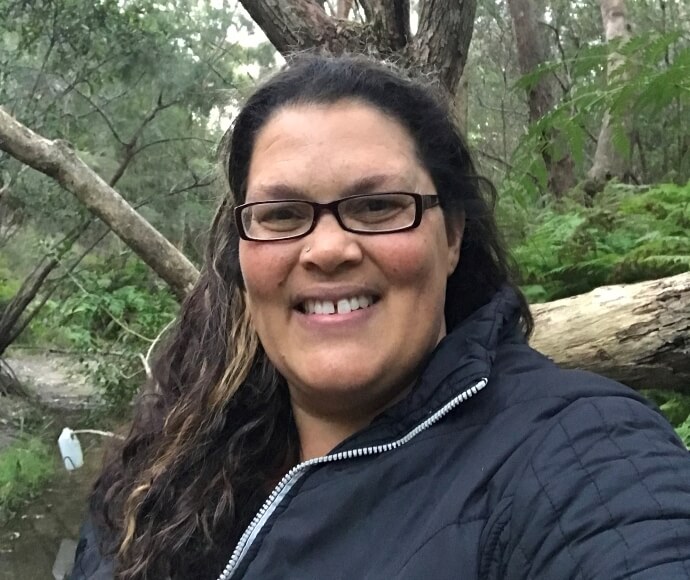
Dr Joanna Haddock
In high school, Joanna’s chemistry teacher told her she asked too many questions, so she put science on hold and did her undergraduate degree in psychology. However, after emigrating from the UK and falling in love with Australia’s unique wildlife, she found her way back to science and completed postgraduate studies in environmental science.
Today, Joanna is a Senior Threatened Species Officer in SoS and puts her PhD to good use, finding innovative solutions and strategies for our threatened species.
‘I see my job is to try to protect, conserve and recover threatened species for future generations. That’s a pretty good reason to get out of bed in the morning,’ she says. ‘Science is about not only collecting good data but communicating the findings with the public in an engaging and meaningful way.’
‘Gender diversity, racial diversity and ability diversity is important in science – there’s actually evidence to suggest that the more diverse a group of scientists, the better the science is. My advice to anyone that identifies as a girl or woman from diverse backgrounds considering a career in science or STEM is to go for it!’
Find out about some of Joanna’s work helping threatened bats through the Bats in Backyards project.
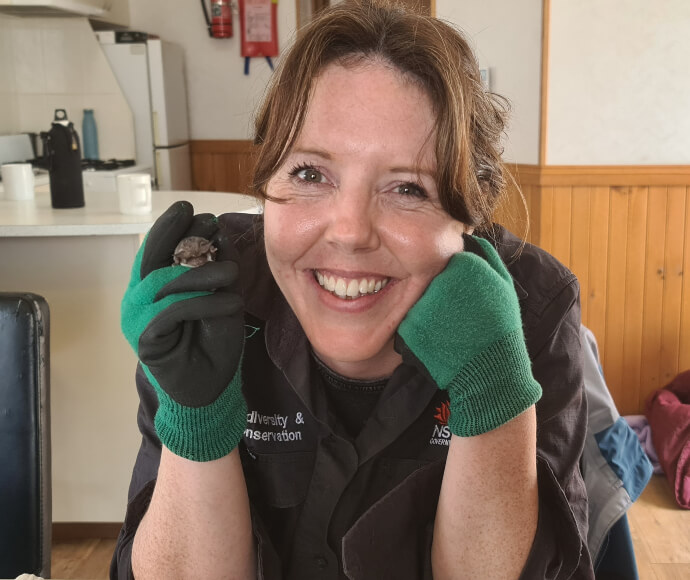
Anna Lloyd
Anna has always loved nature and the environment, and as a child she would spend all day exploring bushland behind her home near Newcastle. She’s now a Senior Threatened Species Officer in SoS and applies her training in science and ecology to the design and implementation of conservation actions for a range of threatened plants and animals.
‘To be able to undertake conservation on a threatened species, you need to understand its ecology – the branch of science that deals with the relationships of species to one another and to their environment.’
Although Anna went to university and studied environmental science, she says that there are many different pathways that people can take to work in conservation, such as volunteering to gather relevant experience and skills or taking up hobbies to become an expert in your field of interest.
‘My advice to young women considering a career in environmental science is to just follow what interests you. From there you can set your mind on a goal and then take the steps to get yourself there. Be open to alternative pathways to reaching your goals, and actively look for these if you experience knock-backs along the way. Don’t let these stop you.’
Find out more about some of Anna’s work helping the threatened Hastings River mouse (Pseudomys oralis).
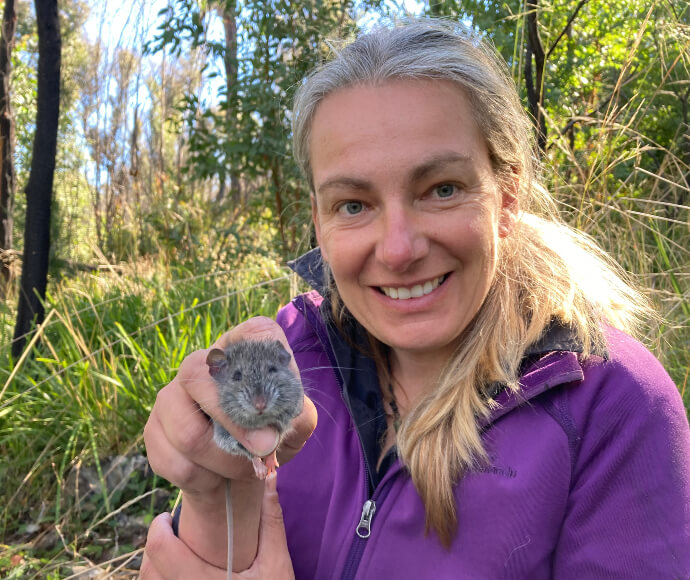
Laura Canackle
Laura is a botanist, mother and Threatened Species Officer working at SoS. She’s always loved plants and as a child would venture into the bushland surrounding her family property near Bredbo with a field guide and a deep curiosity, which later led to her getting an environmental science degree at university.
On juggling motherhood and a career, she says, ‘I love being a mum and always wanted to be one but it’s also important to me that my other hopes and dreams in life are fulfilled too, including my career. I feel like I am doing something that matters.’
‘I do wish, though, that when I was younger I had taken opportunities that looked appealing but that I thought were too risky, like doing a PhD or spending a year working in a remote or exotic place. My advice for young women beginning their careers is to just go for the opportunities that seem interesting to you – life is short and make it great!’
Find out about Laura’s work pollinating orchids in south-eastern New South Wales.
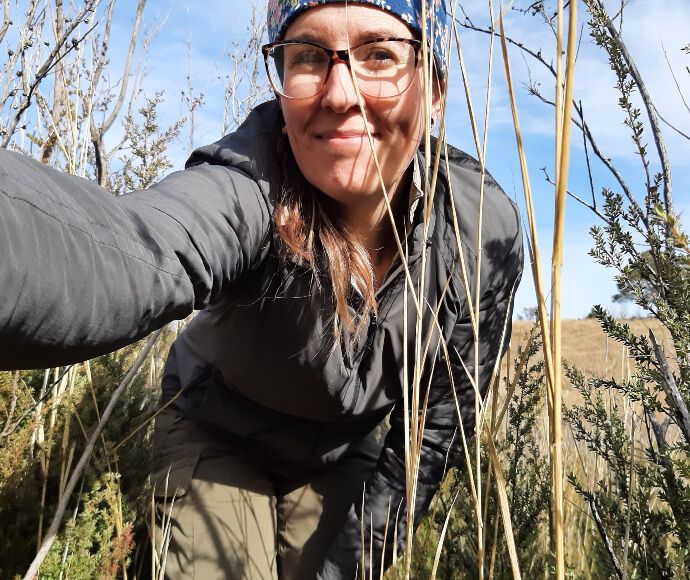
Anna Murphy
Anna is a plant ecologist and Senior Threatened Species Officer working at SoS. Her career, spanning almost 3 decades, began after she completed a degree in natural resource management. She later completed an honours degree in botany.
‘I am fascinated with plant ecology and evolution and passionate about preventing plant extinctions. In July 2022, I worked with a range of partners to coordinate the translocation of over 6,000 endangered orchids into their habitat in New South Wales. Knowing that we have greatly reduced the risk of extinction for these 3 endangered orchids is deeply satisfying.’
‘My advice to anyone who's considering a career in STEM is to follow their interests and passion, support others from under-represented backgrounds, find wise and compassionate mentors to support you, be confident in your achievements and collaborate.’
Find out about Anna’s recent work in Australia’s largest threatened orchid translocation.
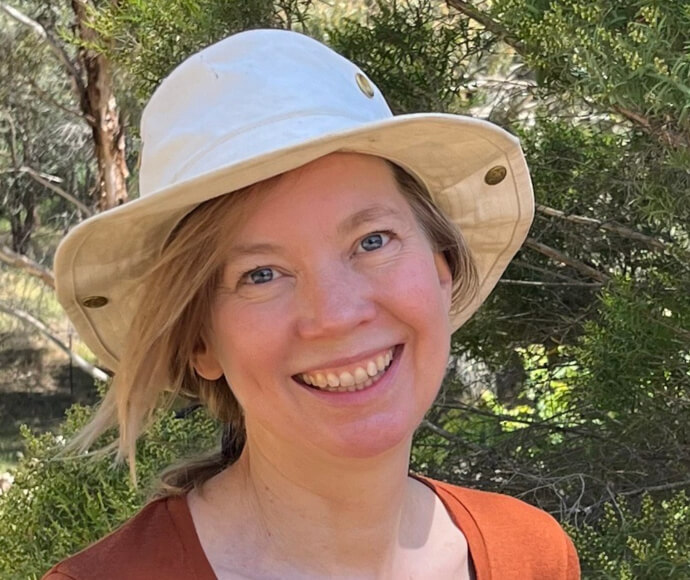
Jessica Sharp
Jessica is an ecologist and Threatened Species Project Officer working at the NSW National Parks and Wildlife Service. She says that, for women with an interest in the environment, an environmental science degree is a good place to start and can lead to all sorts of interesting careers.
‘I always knew I wanted to help animals but what that looked like took a while for me to figure out. I remember finishing university and feeling pretty overwhelmed by choice in all the different paths I could take to focus my career.’
She says one of the best things about working on SoS conservation projects is ‘working together with incredibly talented and passionate conservationists towards achieving not only the best possible outcome for a specific threatened species but also the health of the ecosystem that supports it.’
Her advice to girls and women considering a career in environmental science is ‘seek out and say yes to a diverse array of opportunities, wherever you think your interests may lie. Work to build up a support and technical expertise network by surrounding yourself with inspirational and self-motivated mentors, and never underestimate the value of expressing genuine enthusiasm and taking initiative!’
Read about one of the species Jess is working to save, the Budawangs cliff-heath (Epacris gnidioides).
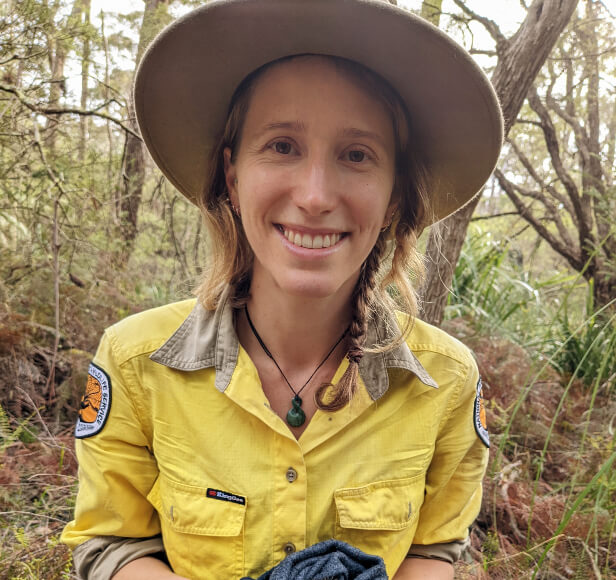
Learn more
Find out more about the Saving our Species program and how we’re securing a future for our threatened species.
Inspired by the women above and want to work with us? Explore career opportunities at the Department of Planning and Environment at I Work for NSW.